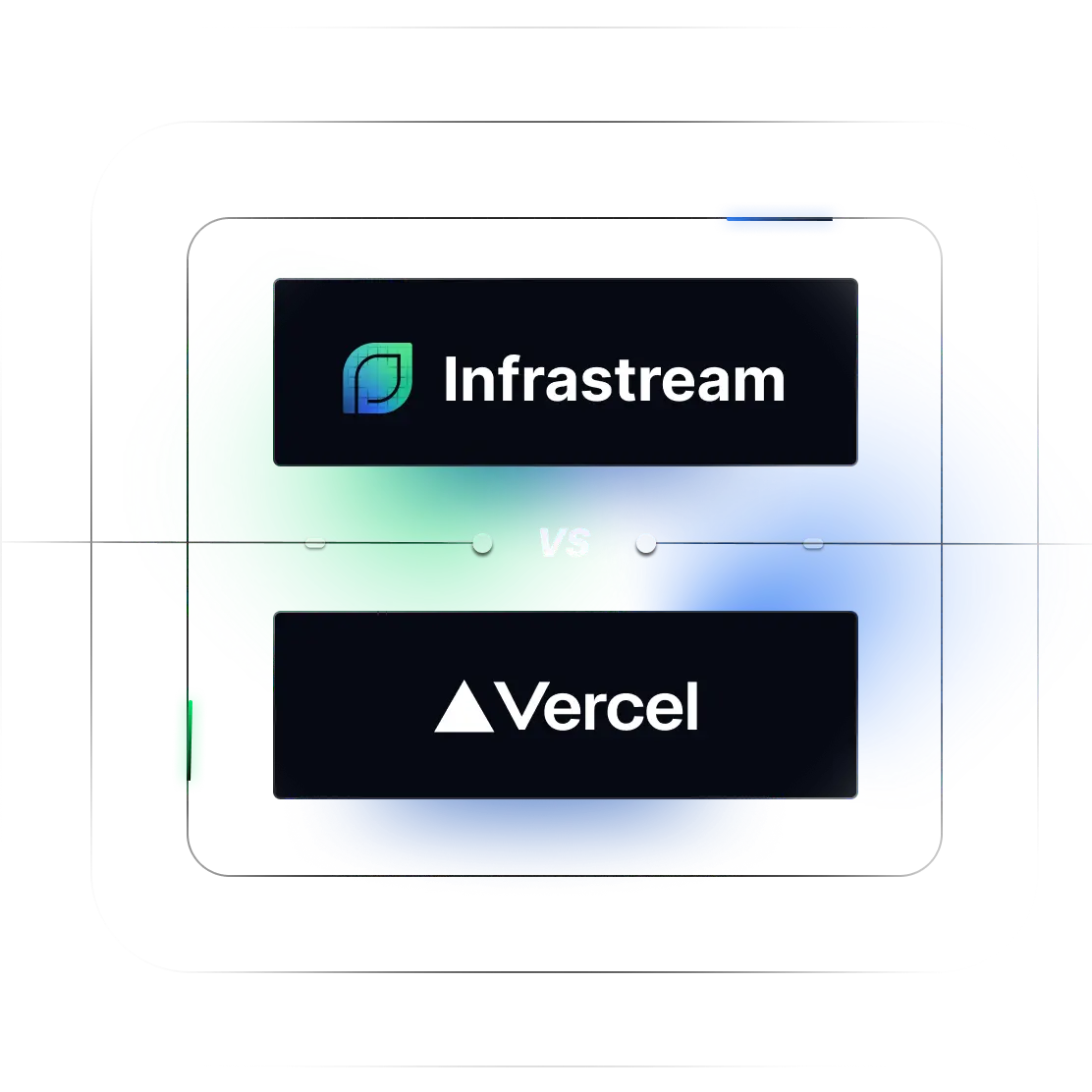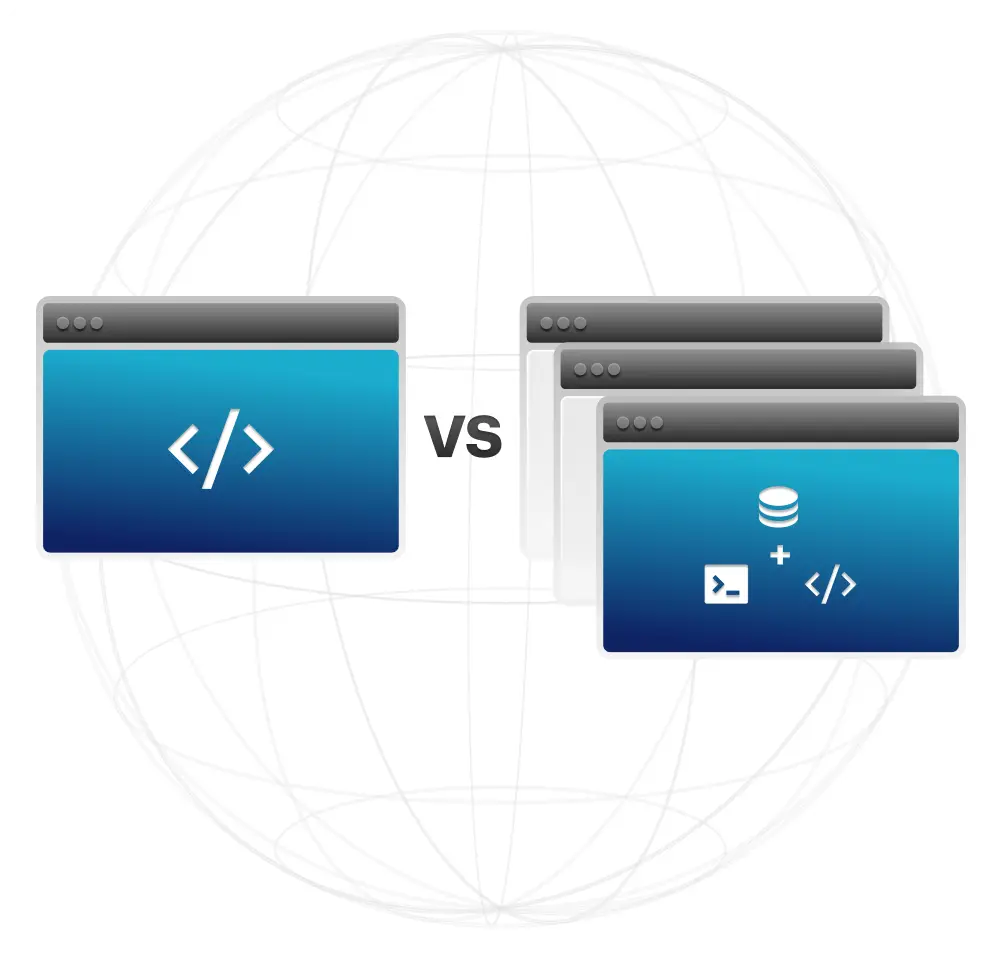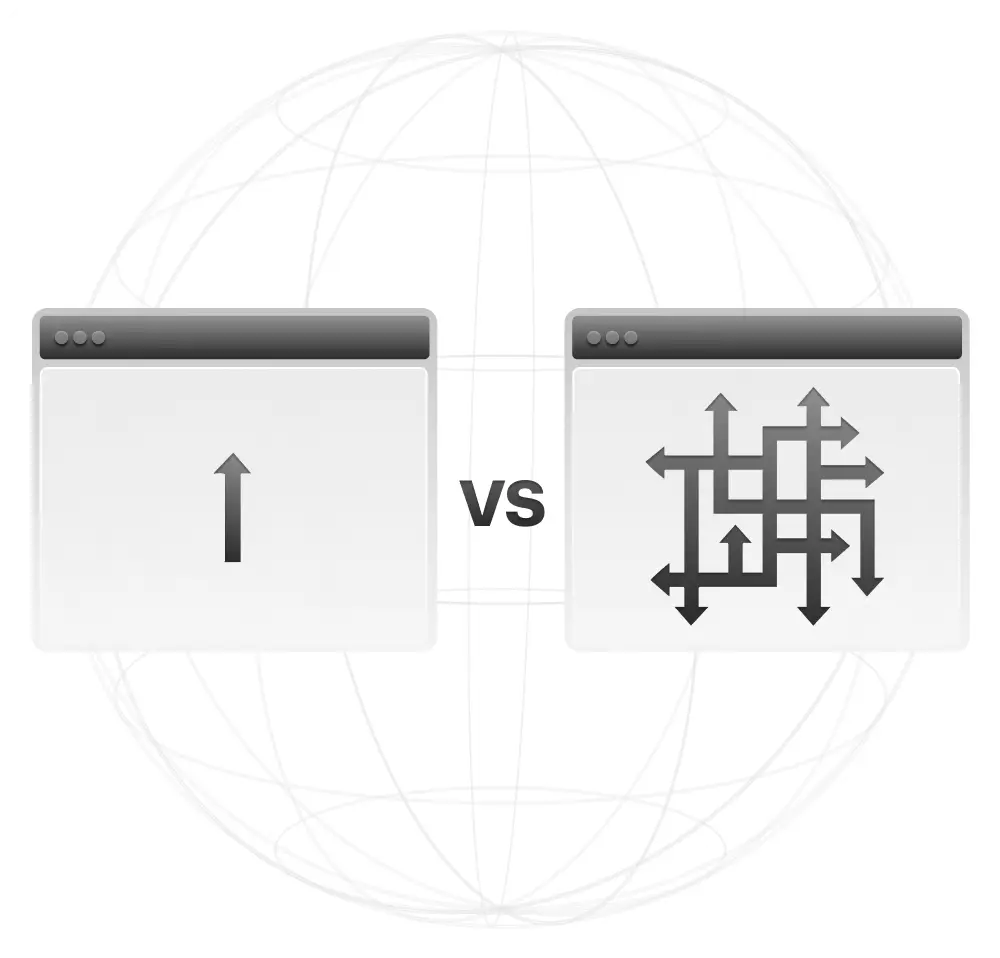
Infrastream vs Vercel: A Full-Stack Platform vs Frontend Cloud
Infrastream’s edge over
Platform Scope:
Frontend vs Full Stack
Vercel specializes in the Frontend Cloud — perfect for static sites, serverless functions, and fast CI/CD for Next.js and similar frameworks.
Infrastream manages the entire app and infrastructure stack — from frontend to backend services, stateful databases, data pipelines, and enterprise cloud networking.


Infrastructure Control:
Abstracted vs Owned
Vercel provides managed hosting with limited visibility into underlying infrastructure. Users interact with Vercel projects, not cloud resources.
Infrastream runs inside your GCP account — provisioning, securing, and managing infrastructure components like GKE, Cloud Run, BigQuery, and VMs.
Security Enforcement:
Add-on vs Built-in
Vercel secures what it hosts — including HTTPS, DDoS protection, and safe serverless execution — but its security scope stops at the boundary of the functions it runs.
Infrastream delivers non-bypassable, embedded security across all environments — including mTLS, Falco/eBPF threat detection, default-deny networking, and ephemeral credentials via Executors.


Application Architecture:
Simple vs Complex
Vercel supports modern frontend apps and simple serverless backends. Complex architectures must be managed outside Vercel.
Infrastream is built for multi-tiered microservices, stateful workloads, message queues, and AI/ML pipelines — all secured and managed under one platform.
Networking:
Predefined vs Configurable
Vercel hides infrastructure complexity — great for simplicity, but not for custom networking or internal integration.
Infrastream configures and secures customer VPCs, subnets, internal/external load balancers, and private networking — directly inside GCP.





Via SCM / Vercel Teams
Via Integration (e.g. Snyk)
(Own user system)
Limited/Via custom int.
Ready to Redefine Your Infrastructure?




